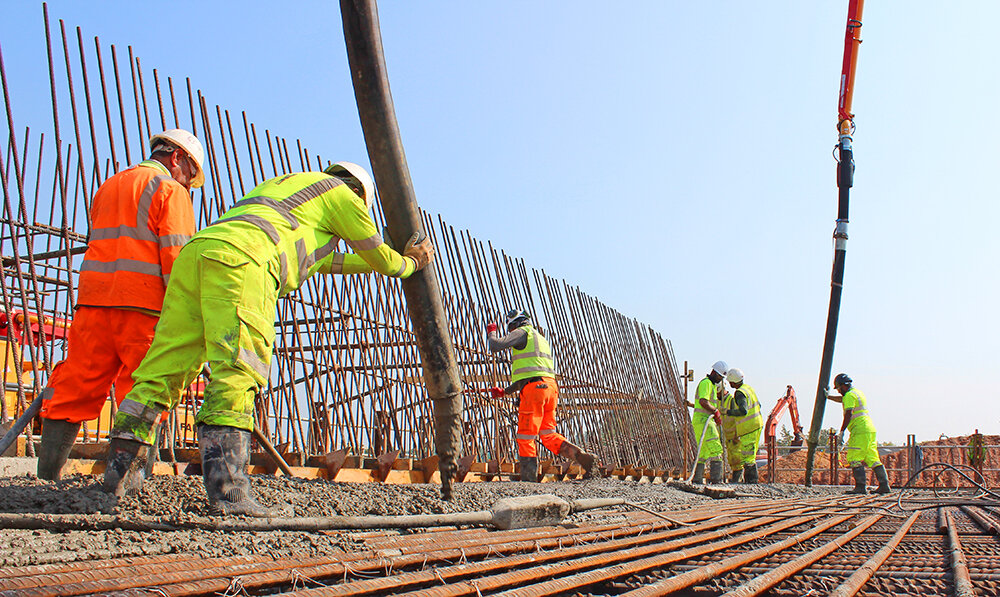Concrete Pouring – Guide To Managing A Successful Pump Pour

The key to a successful concrete pump pour is to manage the pour from ordering the pump and concrete, through organising the site, to supervising to pumping operation. Some guidelines are set out below to assist with planning a pump pour.
When ordering a concrete pump please give the following information:
- Company name
- Contact name and telephone number
- Full site address including postcode if known
- Date and time for the pump, allow approximately 1 hour for the pump operator to set up the pump
- Size of concrete pump required
- Volume and type of concrete including any admixtures, additions, fibres etc.
- Brief description of the pour e.g. footing, external slab, bridge deck etc.
- Any other special requirements – additional pipeline, small diameter pipeline (75mm) second man etc.
To ensure a safe and efficient concrete pump pour, please supply:
- Clear and safe access to the pump set-up area for the pump and the truck mixers
- A level area of hard standing, with no overhead obstructions, on which to set up the pump
- A set-up area that is strong enough to support the maximum outrigger loadings of the pump
- Cement to grout the pipeline – 1 x 25 kg bags per 10 metres of pipeline
- Somewhere to deposit excess grout
- A good pump mix concrete of S3, S4 or S5 consistence. Your ready mixed concrete supplier will advise
- A competent concreting gang to lay the concrete
- A suitable place for the operator to wash the pump out at the end of the job. At least 1/3 cubic metre of concrete will be left in the pump after the pumping operation
- A good supply of water will help the operator, although the pump does carry its own supply
The sequence of a typical concrete pump pour:
- The pump will arrive and the operator will liaise with the contractor before setting up the pump, pipeline (if required) and preparing the grout
- The concrete mixer truck will arrive and back onto the pump
- The pump operator will then grout the line and commence pumping. It is good site practice to pump excess grout to waste, not into the pour
- The concrete will be placed into position using the boom where possible. Where ground-line is used, the concreting gang will need to move the pipeline around as the pour progresses
- Cautionary note: Concrete is pumped at high pressure. All personnel should be made aware of the risks and dangers associated with end hose usage
- When the truck mixer has discharged its load, the mixer chutes will be cleaned before the mixer leaves. The chutes should not be washed into the hopper as this could cause a blockage and affect the quality of the concrete.
- The next mixer will then arrive, back on to the pump and discharge its load
- At the end of the pour, the pump operator will clean all the concrete from the pump and pipeline. This operation will take approximately one hour, more if the job involves a long pipeline
- The pump operator will then put the boom back into its travel position and load all the ancillary equipment onto the pump
- The job sheet will then be prepared for the contractor to sign
- The pump will then leave site and travel back to the depot
Further information
- For further information please request a site visit and/or consult the “CPA Good Practice Guide – Safe Use of Concrete Pumps” (2013), published by the Construction Plant-hire Association (CPA).
- For information on ground conditions for construction plant, you are advised to consult the “Good Practice Guide – Ground Conditions for Construction Plant” (2014), published by the Strategic Forum for Construction and available from the Construction Plant-hire Association (CPA).
Conditions of supply:
- Camfaud Concrete Pumps Ltd supplies equipment subject to CPA Model Conditions for the Hiring of Plant (2011) in conjunction with the Supplementary Conditions for Concrete Pumping. These are available on request.
- The hirer should insure against any liabilities that might be incurred, including damage caused when the pump is being operated in confined spaces.